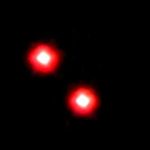Alien Planets & Eyeball Earths: The Search for Habitable Planets
Find out where to look for Extraterrestrial Life. What planets are likely to have the right conditions? And what makes Earth special? So far, in this age of planet hunting, we’ve yet to find anything like our solar system… with rocky inner planets in neat circular orbits, and evenly spaced gas giants on the periphery.
Instead, astronomers have glimpsed a diverse planetary zoo, with giant planets in wide orbits around their parent stars, others that swing in so close they leave a comet-like tail, or molten rocky worlds emblazoned with oceans of lava. These finds have added new complexity to theories of how solar systems emerge in the birth of a star.
As dust and gas swirl into the newborn star, they form a proto-planetary disk. Within this Frisbee-like structure, gravity sculpts planetary bodies that grow in size, sweeping up smaller bodies that form around them. Current theory holds that giant planets, forming on the periphery, commonly migrate into the inner solar system. This confirms the observation of so-called hot Jupiters orbiting perilously close to their parent stars.
But these giants may clear out smaller rocky planets that form close to the star, creating a planetary desert… just where you’d hope to find life. Does that make the search for another Earth a wild goose chase? To find out, a group of planet hunters, using the Keck Telescope in Hawaii, examined a sample of 166 sun-like stars within 80 light years of Earth.
To their surprise, they found that as many as a quarter of all sun-like stars should have planets roughly the size of Earth. Now enter the Kepler Space Telescope, launched in March 2009 on a mission to find Earth-like planets.
Over a four-month period in 2009, it observed the light of over 150,000 stars, within 3000 light years of Earth. The data showed that at least in one case, the planetary desert is not so barren.
The star Kepler 11 is a yellow dwarf similar to our sun. It has at least five planets close enough to be inside the orbit of our Mercury, with a sixth inside the orbit of Venus. There may well be additional planets further out. That won’t be known until 2012, when data from longer orbits is complete.
Overall, Kepler turned up 58 planets in the so-called habitable zone. Most are large gas planets, but who’s to say that some of them don’t have moons with liquid water? Think Avatar, Pandora.
With a growing planetary database, astronomers are beginning to redefine what it takes to spawn life as we know it. Ideally, astronomers will one day stumble upon a world about the size of Earth, with oceans, an atmosphere, a moon to stabilize its orbit, a robust magnetic field to shelter it from solar winds, and creatures beaming television shows into space that reveal their presence.
Until then, the most fertile ground for finding life turns out to be a long-overlooked class of stars.
M Stars, or red dwarfs, range from one half to one-twentieth the mass of our sun and make up 76% of all the stars in our galaxy. The most famous is in the southern constellation of Libra, just 20 light years away, called Gliese 581. A team of French and Swiss astronomers had been studying its light from a telescope in the mountains of Chile.
They noticed a slight jitter: the gravitational tugging of planets. From this so-called radial velocity, they deduced the presence of Gliese 581B, a planet with sixteen times the mass of Earth. At a distance of only six million kilometers, it’s bound to be very hot.
Then came planet C, with an orbit of 11 million kilometers. Still too hot. Then there’s D, at about 33 million kilometers from its sun.
At the outer edge of the star’s habitable zone, it receives only 30% of the light that Earth gets from our Sun. Compare it to Mars, where surface temperatures average around –59 degrees Celsius Astronomers suspect that Planet D is an icy world that migrated in from the outer solar system.
Red dwarfs are known as “Flare Stars” for the violent eruptions that take place on their surfaces. In 1985, the red dwarf AD Leo erupted with a thousand times more power than the worst solar eruptions. To find out what that would do to a planet in a close orbit, scientists simulated the blast.
They found that ultraviolet radiation from the star would split oxygen molecules in the planet’s atmosphere, forming ozone. That’s could be enough to shield it from harm. Studies like this are prompting scientists to redefine just what they mean by “habitable zone.”
Leave A Reply
You must be logged in to post a comment.









 Paranormal
Paranormal

